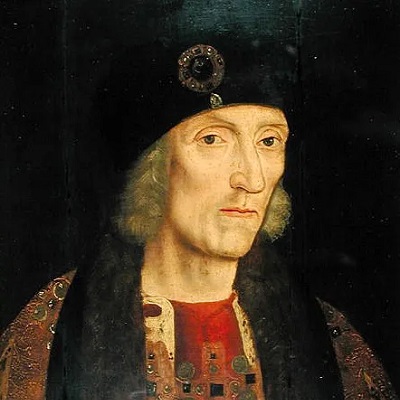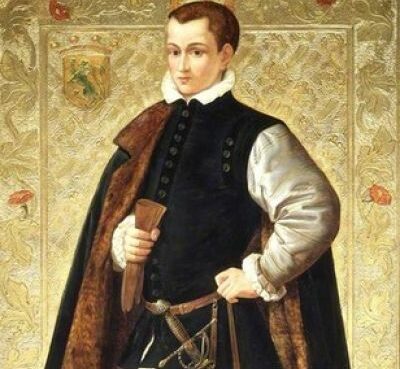Henry VII of England- Biography
Page Contents
Henry VII, also known as Harri Tudur, Earl of Richmond, was the first king of the ‘Tudor Dynasty’ and King of England. He ascended to the throne after defeating the last monarch of the House of York, Richard III, at the ‘Conflict of Bosworth Field,’ the final significant battle of the ‘Wars of the Roses.’ He went on to solidify his claim to the throne by marrying Elizabeth of York, Richard III’s niece. He ruled for 24 years, beginning on August 22, 1485.
Throughout his reign, he worked to strengthen the English monarchy. He enacted a number of economic, administrative, and diplomatic reforms. He also implemented policies aimed at restoring stability, power, and peace while simultaneously fostering economic growth. He entered the alum trade and signed the ‘Magnus Intercursus’ by enacting new levies and supporting the wool business (great agreement). Until his death, he was Lord of Ireland and King of England. Following his death, his son Henry VIII ascended to the throne.
Henry VII of England- Birth, Age, Ethnicity, Siblings, Education
- Edmund Tudor and Lady Margaret Beaufort gave birth to Henry VII on January 28, 1457, in Pembroke Castle, Pembrokeshire, Wales. His father died three months before he was born.
- Edmund Tudor was the son of Owen Tudor, a Welsh esquire, and Catherine of Valois, the widow of King Henry V, whom Owen secretly married. Edmund has created Earl of Richmond in 1452 and was “officially pronounced legitimate by Parliament.”
- Lady Margaret was the only heir to John Beaufort, 1st Duke of Somerset. He was one of King Edward III’s great-grandsons and the grandson of John of Gaunt, Duke of Lancaster. Prior to his marriage, John Beaufort, 1st Earl of Somerset, was born to John of Gaunt and his mistress, Katherine Swynford.
- In the 1390s, King Richard II of England’s parliament recognized the children of Beaufort legitimate, and Pope Boniface IX declared their validity in September 1396. Their half-brother Henry IV, on the other hand, barred them from ascending to the throne.
- As a result, Henry VII Tudor’s chances of coming to the throne remained slim and insignificant until the death of King Henry VI of England and his sole son, Edward of Westminster, Prince of Wales, in 1471. In addition, with the deaths of the two last kinsmen of the Beaufort line, Henry Tudor became the sole surviving male with a lineal claim to the House of Lancaster.
- In 1456, while fighting for Henry VI in South Wales, Henry’s father was apprehended by Yorkists at Carmarthen Castle. Unfortunately, Henry’s father died of the bubonic plague on November 3, roughly three months before Henry VII Tudor was born.
- Jasper Tudor, Earl of Pembroke, his biological uncle, began caring for the 13-year-old widow Lady Margaret and the newborn Henry. The ‘Battle of Towton’ (March 29, 1461) saw a significant victory for Yorkists, with Yorkist Edward, Duke of York deposing Lancastrian King Henry VI and becoming King Edward IV.
- Jasper Tudor went into exile around the same period. Following that, William Herbert, a Welsh nobleman, statesman, and courtier who supported the Yorkists during the ‘War of the Roses,’ became Earl of Pembroke and took control of Pembroke Castle. He was also appointed guardian of Lady Margaret Beaufort and her son Henry.
- Herbert was caught and executed in 1469 after a feud with Richard Neville, Earl of Warwick. In 1470, Warwick restored Henry VI to the throne, prompting Jasper Tudor to return from exile and bring Henry VII Tudor to court. In 1471, Edward IV regained the crown, and Henry VII Tudor fled to Brittany.
Henry VII of England- Professional Career
Ascension to the Throne and the Battle of Bosworth Field
While his mother began marketing him as a credible candidate for the then-King of England, Richard III, Henry VII Tudor pledged on December 25, 1483, to marry Elizabeth of York, Edward IV’s eldest daughter, and the only living heir, earning the respect of his supporters.
Richard III was the target of two major revolts. While the first insurrection, led by Henry Stafford, Duke of Buckingham, was unsuccessful, Jasper Tudor and Henry VII Tudor led a second in August 1485.
The supply of French troops and Scottish forces aided Henry VII Tudor and Jasper Tudor. They were also supported by the Woodvilles, late Edward IV’s in-laws. They won a decisive victory over the Yorkist army on August 22, 1485, at what became known as the ‘Fight of Bosworth Field,’ the final major battle of the ‘Wars of the Roses.’
The death of Richard III in combat not only signified the end of the House of York, but also the birth of the ‘Tudor Dynasty.’ Henry VII Tudor became the dynasty’s first English monarch and was known as Henry VII of England. His coronation took place at Westminster Abbey on October 30, 1485.
Reign
- Henry VII lost no time in fulfilling his promise to marry Elizabeth of York, and they married on January 18, 1486.
- He not only succeeded in uniting the rival houses of Lancaster and York, but he also secured a better claim to the throne for his children. By supporting the Tudor rose, he signified the unity of the families of Lancaster and York (comprising the red rose of Lancaster and the white rose of York).
- The marriage of Edward IV and Elizabeth Woodville had been deemed unlawful by the ‘Titulus Regius’ legislation. It had also deemed their offspring to be illegitimate, preventing them from rising to the throne. The first Parliament of Henry VII annulled this statute. Repealing the legislation restored the legitimacy of Edward IV and Elizabeth Woodville’s children.
- Despite the fact that Henry VII had no prior experience, he proved to be a prudent monarch in terms of finances, and he was successful in building a steady financial administration. He restored the exchequer’s wealth, which had been essentially insolvent.
- He improved revenue collection by instituting strict tax processes, which were, nonetheless, unpopular. Later, when his son Henry VIII succeeded to the throne, the new ruler hanged the two most despised tax collectors, Edmund Dudley and Richard Empson, for treason.
- The ‘Pound Avoirdupois’ measurement system was established. This system not only became a component of the imperial unit system, but it is still a part of the International pound units that are used today.
- He supported the island’s wool business, which eventually led to his involvement in the alum trade in 1486. He licensed ships and sold alums to the Ottoman Empire’s ‘Low Countries,’ lowering the price of a once-expensive product.
- He worked hard to keep his kingdom in unity and economic prosperity. To accomplish this, he signed a number of treaties, including the ‘Treaty of Medina del Campo’ with fledgling Spain on March 26, 1489. The deal resulted in his son, Arthur Tudor, marrying Catherine of Aragon. On November 3, 1492, he signed the ‘Treaty of Etaples’ with France, and in 1502 he signed the ‘Treaty of Perpetual Peace’ with Scotland.
- In February 1496, he and Duke Philip IV of Burgundy signed the economic pact ‘Magnus Intercursus’ (big agreement). Other signatories included the Holy Roman Empire, Florence, the Hanseatic League, Venice, and the Dutch Republic. This resulted in Henry VII’s most prosperous economic success.
- He relied heavily on ‘Justices of the Peace and the ‘Court of Star Chamber’ to keep his kingdom in order. He also utilized them to thwart any prospective challenge to royal power.
Personal History and Legacy
He and Elizabeth of York had eight children. On April 2, 1502, he lost his first son and heir-apparent, Arthur, Prince of Wales. Elizabeth died on February 11, 1503, leaving him bereaved.
He died of TB on April 21, 1509, at the Richmond Palace. His dead remains were laid with those of his wife at Westminster Abbey. Henry VIII, his second son, succeeded him to the throne.
Also Read, Viggo Sorensen, Avivasofia, and Giselle Guilmette.



